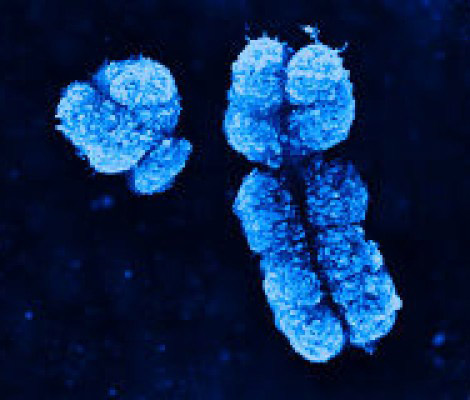sex chromosome

Human Y- (left) and X- (right) chromosomes.
A sex chromosome is one of the two chromosomes that specify an organism's genetic sex. Humans have two kinds of sex chromosomes, one called X and the other Y; these also carry some genetic information not related to sex determination.
Sex chromosomes are inherited (see heredity) in the same way as the other 22 human chromosome pairs, normal persons being either XX (female) or YY (male). The Y chromosome carries little genetic information and it is largely the properties of the X chromosome that determine "sex-linked" characteristics in males. Sex-linked characteristics include hemophilia and color blindness, which are carried as recessive genes in females.
X-chromosome
A normal human female has two X-chromosomes in her body cells, so that each of her ova (eggs) is haploid, having only one X-chromosome. When she passes this on to one of her offspring, it influences the development of female characteristics. Her male offspring will have one X- and one Y-chromosome in his body cells. Non-sexual characteristics are also carried on the X-chromosome.
X-chromosomes occur in other organisms as well, such as fruitflies. Where one sex has two identical chromosomes and the other has one of each type of sex chromosome, the former are called the X-chromosomes. Sometimes sex is determined by the presence or absence of one particular chromosome, as in grasshoppers. This is also called the X-chromosome.


